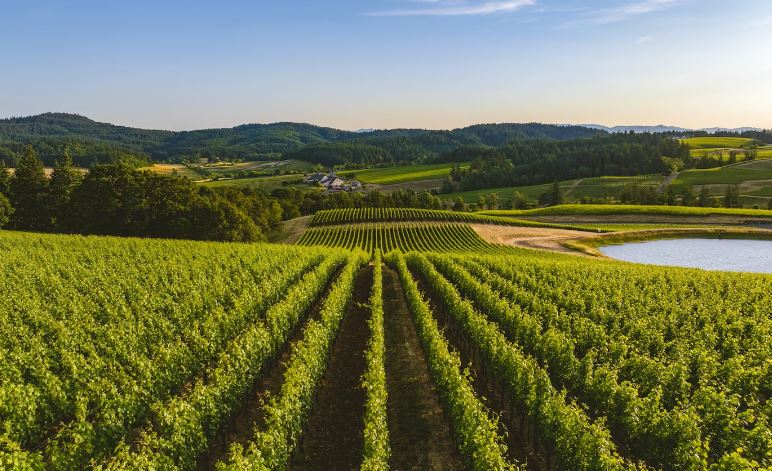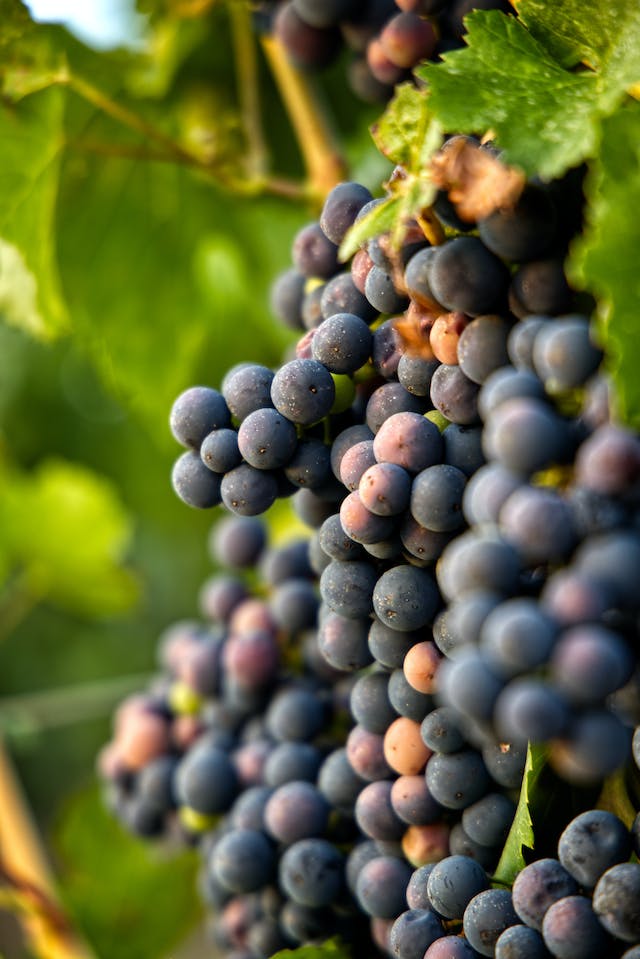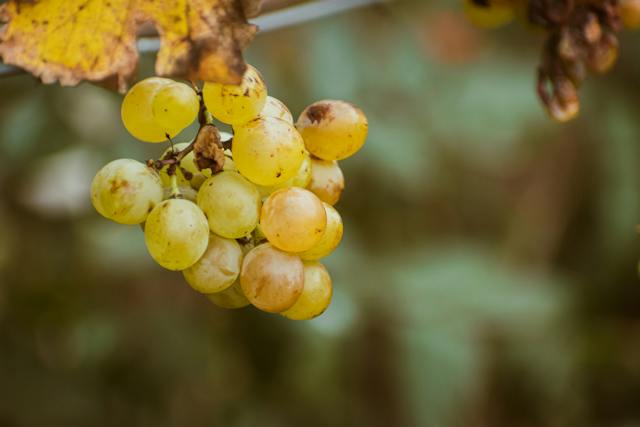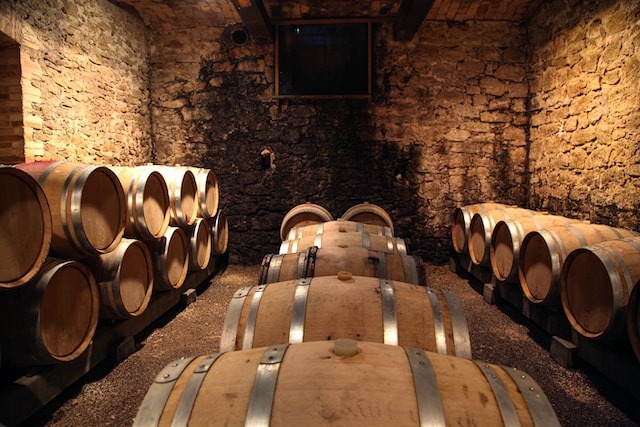Introduction
Nestled in the heart of the Pacific Northwest, the Willamette Valley in Oregon is a treasure trove for wine enthusiasts and nature lovers alike.
This exquisite region is renowned for its exceptional wine production and is often considered one of the premier wine destinations in the United States. With a rich history, diverse terroir, and a commitment to sustainable winemaking, the Willamette Valley offers a remarkable experience for all who visit.
A Geography of Beauty and Diversity
The Willamette Valley, often referred to as Oregon’s wine country, is a geographical wonder that epitomizes beauty and diversity. This picturesque region, nestled in the heart of the Pacific Northwest, stretches approximately 150 miles from the Columbia River in the north to Eugene in the south. Here, nature has crafted a landscape that captivates the senses and creates an ideal environment for wine production.
A Lush Land of Contrasts
At first glance, the Willamette Valley offers a lush and serene landscape. Verdant vineyards stretch as far as the eye can see, nestled between gently rolling hills and framed by the majestic Coast Range to the west. However, upon closer inspection, one discovers the rich tapestry of diversity that defines this region.
Terroir: The Essence of Diversity
The term “terroir” encapsulates the idea that the combination of soil, climate, and topography unique to a specific region imparts a distinctive character to the wines produced there. In the Willamette Valley, terroir is not a theoretical concept but a tangible reality. Here, the diversity of terroir is the essence of the region’s wine production.
The soil composition in the Willamette Valley varies significantly. Volcanic soils, such as the iconic Jory and Nekia soils, dot the landscape in some areas, imparting a mineral-rich quality to the wines. In other parts, sedimentary rock and marine sediment provide a different foundation, resulting in wines with unique flavors and characteristics.
There are also many newer wine regions around the world that showcase great terroir for vineyards. You can learn more about these in our article about the Latest Regions Transforming the Wine Industry.
Climate: The Marriage of Maritime and Continental
The Willamette Valley’s climate is a marriage of maritime influences from the nearby Pacific Ocean and continental elements. Cool breezes from the ocean temper the temperatures, creating a moderate climate that is ideal for grape cultivation. This delicate balance allows grapes to ripen slowly and evenly, which is crucial for producing high-quality wines.
The valley’s north-south orientation also plays a role in climate diversity. The northern end is cooler and experiences more rainfall, while the southern reaches are warmer and drier. This climate variation allows winemakers to cultivate a wide range of grape varieties, from the cool-loving Pinot Noir to the heat-tolerant Cabernet Sauvignon.
Microclimates: A Mosaic of Flavors
Within the broader Willamette Valley, numerous microclimates exist, further enriching the diversity of the region. These microclimates arise from variations in elevation, proximity to bodies of water, and local geography. For instance, vineyards situated on south-facing slopes may receive more sun exposure and warmth, resulting in grapes with different characteristics compared to those on north-facing slopes.
The Willamette Valley is a geographical masterpiece, where beauty and diversity harmoniously coexist. The interplay of terroir, climate, and microclimates allows winemakers to craft a wide spectrum of wines, each with its own unique personality and expression. Whether you’re savoring a delicate Pinot Noir from the Dundee Hills or a robust Chardonnay from the Eola-Amity Hills, you’re experiencing the beauty and diversity that make the Willamette Valley one of the world’s most remarkable wine regions. It’s a place where nature’s artistry meets the artistry of winemaking, resulting in a truly extraordinary wine experience.
The Pinot Noir Capital of America
Willamette Valley is, perhaps, most famous for its Pinot Noir wines. This region’s unique terroir—comprising volcanic soils, sedimentary rock, and marine sediment—creates a distinctive character in its wines. Pinot Noir grapes thrive here, producing wines with vibrant red fruit flavors, balanced acidity, and elegant, nuanced aromas.
Nestled within the picturesque Willamette Valley of Oregon lies what many wine enthusiasts consider the “Pinot Noir Capital of America.” This title rightfully belongs to this exceptional region, which has garnered international acclaim for its mastery of the delicate and elusive Pinot Noir grape.
The Quest for Excellence
Pinot Noir is often regarded as one of the most challenging grape varieties to cultivate and vinify successfully. Its thin skin, susceptibility to disease, and sensitivity to climate variations make it a grape that demands precise care and attention. However, it is precisely these challenges that have driven winemakers in the Willamette Valley to excel in their craft.
Terroir: A Perfect Match
The Willamette Valley’s terroir provides an ideal canvas for the cultivation of Pinot Noir. Volcanic soils, sedimentary rock, and marine sediment all contribute to the region’s diverse terroir. These unique soil types, combined with the valley’s maritime climate, offer the perfect conditions for Pinot Noir to thrive.
Volcanic soils, such as the famous Jory and Nekia soils, provide excellent drainage and impart distinctive mineral qualities to the grapes. This results in wines that are often described as having a sense of place, with notes of red fruit, earthiness, and minerality.
Cool Climate Elegance
The Willamette Valley’s cool climate is a defining feature of its Pinot Noir production. The Pacific Ocean’s influence, along with the valley’s north-south orientation, ensures that grapes ripen slowly and evenly. This extended growing season allows the development of complex flavors and balanced acidity, hallmarks of exceptional Pinot Noir.
Expressing Terroir Through Pinot Noir
One of the most remarkable aspects of the Willamette Valley’s Pinot Noir production is its ability to express the nuances of its terroir. Different sub-appellations within the valley, such as Dundee Hills, Yamhill-Carlton, and Chehalem Mountains, each offer distinct soil and climate conditions. Winemakers use these variations to craft wines that showcase the unique characteristics of their specific vineyard sites.
A Commitment to Excellence
Willamette Valley winemakers have long been committed to producing world-class Pinot Noir. This dedication is reflected in their sustainable and organic farming practices, which not only preserve the region’s natural beauty but also contribute to the overall quality of their wines. Many wineries take a hands-on approach, meticulously tending to their vines and carefully hand-harvesting grapes to ensure the highest quality fruit.
International Acclaim
The Pinot Noir wines of the Willamette Valley have received international acclaim, earning praise from wine critics and enthusiasts alike. They are often celebrated for their bright red fruit flavors, balanced acidity, and elegant, nuanced aromas. These wines have competed favorably with their counterparts from renowned Pinot Noir regions like Burgundy, France, solidifying the Willamette Valley’s reputation as a global Pinot Noir powerhouse.
The Willamette Valley in Oregon stands proudly as the “Pinot Noir Capital of America.” Its unique combination of terroir, climate, and winemaking expertise has allowed this region to produce Pinot Noir wines that are truly world-class. Whether you’re a seasoned wine connoisseur or an aspiring enthusiast, a journey through the Willamette Valley’s vineyards and a taste of its exceptional Pinot Noir offerings is an experience that will forever leave its mark on your palate and memory.
Chardonnay and Beyond
While the Willamette Valley in Oregon has earned its reputation as the “Pinot Noir Capital of America,” it is by no means a one-trick pony. This remarkable wine region offers a diverse range of grape varieties, each contributing to the valley’s thriving wine culture. Among these, Chardonnay stands out as a star player, but there’s a whole world of exciting wines beyond this noble grape.
Chardonnay: A Cool-Climate Delight
Chardonnay, often associated with Burgundy, France, thrives in the cool-climate embrace of the Willamette Valley. Here, it produces wines that are both refreshing and complex. Willamette Valley Chardonnays are celebrated for their bright acidity, citrus notes, and a tantalizing mineral character that reflects the region’s diverse terroir. These wines are a testament to the valley’s ability to craft world-class whites in addition to its renowned Pinot Noirs.
Pinot Gris: A Quenching Choice
Another white varietal that shines in the Willamette Valley is Pinot Gris. Similar to Pinot Noir, Pinot Gris is a mutation of the Pinot grape family and has found its perfect home here. The valley’s cooler temperatures help maintain the grape’s vibrant acidity, resulting in wines that burst with flavors of green apple, pear, and a touch of spice. Pinot Gris from the Willamette Valley is a refreshing and versatile option, ideal for warm summer days or pairing with a variety of dishes.
Riesling: A Hidden Gem
While often overshadowed by the popularity of Pinot Noir and Chardonnay, Riesling has been gaining recognition in the Willamette Valley. This aromatic grape produces wines with enticing floral aromas and flavors that range from bone-dry to lusciously sweet. Winemakers have the chance to create Rieslings that exhibit a wide range of flavors, from crisp and zesty to creamy and honeyed, thanks to the valley’s different microclimates.
Other Varietals: A World of Exploration
Beyond these well-known varietals, the Willamette Valley continues to experiment and innovate. Winemakers are exploring with grapes such as Gamay Noir, Tempranillo, and even Syrah, leveraging the region’s diverse terroir to create unique expressions of these varietals. This spirit of experimentation and willingness to push boundaries is a testament to the valley’s commitment to excellence in winemaking.
A Tapestry of Flavors and Experiences
The Willamette Valley’s commitment to producing exceptional wines extends to every grape variety it cultivates. Visitors to the region can embark on a tasting journey that takes them from the delicate elegance of Pinot Noir to the zesty freshness of Chardonnay, and beyond. Each winery visit offers a new and exciting dimension to the valley’s wine culture, creating a tapestry of flavors and experiences that cater to every palate.
While the Willamette Valley has rightfully earned its reputation as the “Pinot Noir Capital of America,” it offers a diverse and exciting range of wines beyond Pinot Noir. From the crisp and refreshing Chardonnays to the aromatic Rieslings and the emerging varietals, the valley is a playground for wine enthusiasts seeking new tastes and experiences. It’s a testament to the region’s versatility and its commitment to pushing the boundaries of winemaking in pursuit of excellence.
Sustainable Stewardship
In the Willamette Valley, sustainability is more than just a catchphrase, it’s a way of life. Many wineries are committed to environmentally friendly and organic farming practices. These efforts ensure not only the preservation of the region’s natural beauty but also contribute to the overall quality of the wines produced here.
One of the most remarkable aspects of Oregon’s Willamette Valley wine region is its unwavering commitment to sustainable stewardship. This dedication extends beyond the vineyards and wineries, reaching into the very heart of the community and the environment. Here, sustainability isn’t just a buzzword; it’s a way of life and a core value that shapes the entire wine industry.
Eco-Friendly Farming Practices
Sustainable agriculture is the foundation upon which the Willamette Valley’s wine culture is built. Winemakers in the region prioritize eco-friendly farming practices that respect the land and the delicate balance of the ecosystem. Some of these practices include:
- Organic Farming. Many vineyards are certified organic, which means they avoid the use of synthetic pesticides and herbicides, opting for natural alternatives to protect both the grapes and the environment.
- Biodynamic Farming. Some winemakers embrace biodynamic farming principles, which go a step further by treating the vineyard as a holistic, self-sustaining system. This includes practices such as using lunar cycles for planting and harvesting.
- Low-Impact Viticulture. Willamette Valley wineries often use sustainable techniques like dry farming and cover cropping to reduce water usage and soil erosion, promoting long-term soil health.
- Biodiversity Conservation. Many vineyards preserve natural habitats and incorporate biodiversity-enhancing features like wildflower meadows and hedgerows to attract beneficial insects and wildlife.
Efficiency of Energy Conservation
Sustainability in the Willamette Valley goes beyond the vineyards to winery operations. Winemakers prioritize energy efficiency and conservation by:
- Solar Power. Some wineries harness the region’s abundant sunshine by installing solar panels to generate clean energy, reducing their carbon footprint.
- Winery Design. Sustainable winery design, with features like passive heating and cooling, can significantly reduce energy consumption during production.
- Recycling and Waste Minimization. Wineries implement comprehensive recycling programs and work to minimize waste, ensuring that their operations are as environmentally friendly as possible.
Participation in the Community and Social Responsibility
Sustainable stewardship also extends to the local community. Many Willamette Valley wineries actively engage in social responsibility efforts, including:
- Local Sourcing. Restaurants and wineries in the region often source ingredients locally, supporting neighboring farmers and artisans.
- Community Events. Wineries frequently host events and fundraisers that benefit local charities and nonprofit organizations, fostering a sense of community and giving back to the region that nurtures them.
Certifications and Accountability
To underscore their commitment to sustainable practices, some Willamette Valley wineries seek certification from organizations like LIVE (Low Input Viticulture and Enology) or the Demeter Biodynamic certification. These certificates offer accountability and transparency, enabling customers to choose wisely and support wineries that share their beliefs.
Preserving the Natural Beauty
The Willamette Valley’s breathtaking landscapes are not just a backdrop to the wine industry; they are cherished and protected. Winemakers and residents alike understand the importance of preserving the valley’s natural beauty. This commitment to sustainability ensures that future generations will continue to enjoy the pristine environment that makes the Willamette Valley so special.
Sustainable stewardship is an integral part of the Willamette Valley’s identity. It infuses all element of the wine business, from the vineyard to the bottle, and is proof of the region’s commitment to both high standards in winemaking and environmental stewardship. As visitors and consumers explore the valley’s wines, they can do so with the knowledge that each sip reflects the collective effort to protect and sustain this remarkable wine region for years to come.
Family-Owned Charm
Visitors to the Willamette Valley will find numerous family-owned wineries and boutique producers. These smaller, often intimate operations offer a personal touch to wine tasting experiences. Many winemakers are passionate about their craft, and their dedication is palpable in the exceptional wines they produce.
In the heart of Oregon’s Willamette Valley wine region, amid the sprawling vineyards and picturesque landscapes, lies a charming aspect of its wine culture: family-owned wineries. These boutique operations, often passed down through generations, bring a unique and intimate charm to the region’s wine scene.
A Passionate and Devoted Legacy
Family-owned wineries in the Willamette Valley are more than just businesses; they are labor of love, a testament to the passion and dedication of the families who run them. Many of these wineries have deep roots in the region, with founders who pioneered the cultivation of grapes and the art of winemaking.
Handcrafted Wines with a Personal Touch
What sets family-owned wineries apart is their commitment to crafting wines with a personal touch. These winemakers are intimately involved in every aspect of the winemaking process, from tending to the vineyards to meticulously overseeing the cellar. This hands-on approach ensures that each bottle reflects the family’s vision and commitment to quality.
Small-Batch Excellence
Family-owned wineries often produce smaller quantities of wine compared to larger commercial operations. This focus on quality over quantity allows them to maintain exceptional standards and to experiment with unique winemaking techniques. Visitors to these wineries can expect to taste limited-production wines that may not be widely available elsewhere.
Generational Wisdom
With each generation, family-owned wineries accumulate a wealth of knowledge about the unique terroir of the Willamette Valley. This deep understanding of the land, climate, and grape varieties passed down through the years contributes to the exceptional quality of their wines. It also fosters a strong connection to the region’s history and traditions.
Warm Hospitality
One of the hallmarks of family-owned wineries is their warm and welcoming hospitality. Visitors are often treated like extended family members, receiving personalized attention and guided tastings by the winemakers themselves. These wineries offer a genuine and intimate wine-tasting experience that is both educational and memorable.
Innovation and Tradition
While rooted in tradition, family-owned wineries in the Willamette Valley are not afraid to innovate. They often experiment with new winemaking techniques and grape varieties while still honoring the principles and practices that have made the region famous. This blend of tradition and innovation keeps their offerings fresh and exciting.
A Sense of Place
Family-owned wineries take pride in being an integral part of the Willamette Valley community. They often source their grapes locally, contributing to the region’s sustainable farming practices. Their wines reflect the unique characteristics of the valley’s terroir, offering a true sense of place with each sip.
Preserving a Legacy
These family-owned wineries are not just businesses; they are legacies that families aim to preserve for future generations. As they pass the torch to their children and grandchildren, they ensure that the traditions, values, and commitment to excellence continue to thrive.
The family-owned wineries of the Willamette Valley bring a touch of warmth, tradition, and personal connection to the region’s vibrant wine culture. Their dedication to crafting exceptional wines and preserving a legacy adds a layer of charm and authenticity that makes exploring the valley’s wine scene a truly enriching experience. Whether you’re a seasoned wine enthusiast or a casual visitor, a visit to one of these wineries is an opportunity to savor the rich history and passion that make the Willamette Valley so special.
A Wine Tourism Haven
Wine tourism is a thriving industry in the Willamette Valley. The region’s picturesque vineyards, rolling hills, and scenic landscapes create an inviting atmosphere for visitors. Wineries frequently host tastings, tours, and events year-round, ensuring that wine lovers have ample opportunities to explore the local wine culture.
Nestled in the picturesque landscapes of Oregon’s Willamette Valley lies a true haven for wine tourism enthusiasts. This remarkable region not only produces world-class wines but also offers visitors a multifaceted and immersive wine-tasting experience that is second to none. From stunning vineyard vistas to engaging tours and events, the Willamette Valley is a wine lover’s paradise.
Vineyard Scenery: A Feast for the Eyes
One of the most captivating aspects of wine tourism in the Willamette Valley is the breathtaking vineyard scenery. Rolling hills, lush green vines, and picturesque winery estates create a feast for the eyes. Visitors can explore vineyards, take leisurely walks among the vines, and capture stunning photographs of the beautiful landscapes.
Tasting Rooms: An Array of Flavors
The valley boasts an abundance of wineries and tasting rooms, each offering a diverse range of wines. Whether you’re a fan of Pinot Noir, Chardonnay, Pinot Gris, or any other varietal, you’ll find a wealth of options to taste and explore. Many tasting rooms are located in charming settings, from historic farmhouses to modern architectural marvels.
Guided Tours: A Journey of Knowledge
For those seeking a deeper understanding of the winemaking process and the region’s terroir, guided tours are readily available. Knowledgeable guides lead visitors through vineyards and wineries, explaining the nuances of grape cultivation, winemaking techniques, and the region’s history. These tours provide invaluable insights into what makes the Willamette Valley’s wines so special.
Events and Festivals: Celebrating Wine Culture
The Willamette Valley hosts a variety of wine-related events and festivals throughout the year. These gatherings offer a chance to celebrate the region’s wine culture and provide opportunities to taste a wide selection of wines from different wineries in one place. These joyous events include the Willamette Valley Barrel Tour, the International Pinot Noir Celebration (IPNC), and the Oregon Wine Country Half Marathon.
Culinary Delights: Wine and Food Pairings
Wine and food go hand in hand, and the Willamette Valley offers a delectable culinary scene to complement its wines. Many wineries partner with local chefs to provide wine and food pairings that elevate the tasting experience. These pairings often showcase the region’s farm-fresh ingredients and culinary talent.
Boutique Accommodations: A Cozy Stay
For travelers seeking a complete wine tourism experience, the Willamette Valley offers a range of boutique accommodations, including charming bed-and-breakfast inns and cozy guest cottages. Visitors can truly experience the wine culture and friendliness of the valley by staying at these places.
Community Engagement: A Warm Welcome
Visitors to the Willamette Valley are warmly welcomed by the local community. The people here are passionate about sharing their love for wine and the region’s unique charm. The sense of camaraderie among winemakers, residents, and tourists fosters a friendly and inviting atmosphere.
Sustainable Tourism: Respecting the Land
Sustainable tourism is also a priority in the Willamette Valley, with many wineries and businesses dedicated to minimizing their environmental impact. This commitment to preserving the natural beauty of the region ensures that future generations can continue to enjoy its splendor.
The Willamette Valley in Oregon is not merely a wine-producing region but a wine tourism haven that offers a holistic experience for enthusiasts and explorers. From the stunning vineyard landscapes to engaging tours, events, and a warm sense of community, the valley’s wine culture is a true treasure waiting to be discovered by wine lovers and travelers alike.
Culinary Delights
In addition to its world-class wines, the Willamette Valley of Oregon offers a delectable array of culinary delights that complement the wine-tasting experience. From farm-fresh ingredients to innovative chefs and diverse dining options, the region’s culinary scene is a perfect match for its exceptional wines.
Farm-to-Table FreshnessÇ
The Willamette Valley is a haven for farm-to-table cuisine. Many restaurants in the region prioritize sourcing ingredients locally, often from nearby farms and producers. This commitment to freshness ensures that the flavors in each dish are vibrant and reflective of the season. Whether it’s crisp, just-harvested vegetables or succulent meats, the quality of the ingredients shines through.
Wine and Food Pairings
Wineries in the Willamette Valley often offer wine and food pairings that elevate the tasting experience. Talented chefs work with local ingredients to create dishes that complement the wines perfectly. These pairings showcase the harmony between wine and cuisine and enhance the overall enjoyment of both.
Seafood and Beyond
The proximity of the Willamette Valley to the Pacific Ocean means that fresh seafood is readily available. Locally sourced seafood, such as salmon, Dungeness crab, and oysters, frequently grace the menus of restaurants in the region. Chefs take pride in preparing these treasures of the sea with creativity and finesse.
International Flavors
While the Willamette Valley is known for its local and sustainable cuisine, it also embraces international flavors. Visitors can savor dishes influenced by various culinary traditions, from Italian and French to Japanese and Mexican. This diversity adds a delightful dimension to the dining options in the valley.
Wineries with Restaurants
Many wineries in the Willamette Valley boast their own on-site restaurants. These establishments offer not only superb wine but also gourmet dining experiences. Whether you’re enjoying a meal overlooking vineyards or sipping wine in a cozy tasting room, the fusion of wine and cuisine is an integral part of the valley’s culture.
Festivals and Food Trucks
The Willamette Valley hosts a variety of food-related festivals and events throughout the year. From wine and food pairings to culinary competitions and food truck gatherings, there’s always something exciting happening for food enthusiasts. These events provide an opportunity to sample a wide range of dishes and flavors.
Vibrant Farmers’ Markets
Visiting local farmers’ markets is a must for foodies exploring the Willamette Valley. These markets offer an abundance of fresh produce, artisanal cheeses, baked goods, and more. It’s a chance to meet the farmers and producers who contribute to the region’s vibrant culinary scene.
Culinary Tours and Experiences
For a more immersive culinary adventure, consider participating in culinary tours and experiences offered in the Willamette Valley. These tours often include visits to wineries, tastings, cooking classes, and behind-the-scenes access to local food producers.
Food and Wine Trails
The valley features food and wine trails that guide visitors to the best culinary experiences in the region. These trails highlight wineries, restaurants, and local food producers, creating a roadmap for a memorable gastronomic journey.
The culinary scene in the Willamette Valley of Oregon is a delightful complement to its exceptional wines. Whether you’re enjoying a gourmet meal at a winery, savoring the freshness of local ingredients, or exploring diverse international flavors, the region’s culinary delights are sure to enhance your wine-tasting experience and leave your taste buds thoroughly satisfied.
Innovation and Tradition
The Willamette Valley honors its winemaking traditions while embracing innovation. Winemakers here continually experiment with new techniques and grape varieties, ensuring that the region remains dynamic and at the forefront of American wine production.
In the Willamette Valley of Oregon, innovation and tradition harmoniously coexist in the realm of winemaking. This unique blend of cutting-edge techniques and a deep respect for time-honored traditions has propelled the region to the forefront of the global wine industry.
Honoring the Roots: Traditional Winemaking
- Handcrafted Excellence. Many wineries in the Willamette Valley adhere to traditional winemaking practices. Grapes are hand-harvested and carefully sorted, emphasizing quality over quantity. This hands-on approach ensures that each grape is treated with the utmost care, preserving its unique characteristics.
- Oak Aging. Traditional oak aging methods, often using French oak barrels, are still prevalent in the valley. This practice imparts subtle flavors and textures to the wines, particularly Chardonnay and Pinot Noir. The balance between fruit expression and oak influence is carefully considered to create wines of finesse.
- Minimal Intervention. Some winemakers adopt a minimal intervention approach, allowing the grapes and the terroir to speak for themselves. Natural fermentation, indigenous yeast, and limited use of additives showcase the purest expression of the fruit.
Embracing the New: Innovative Techniques
- Sustainable Practices. The Willamette Valley is a leader in sustainable winemaking. Wineries actively employ eco-friendly practices, such as organic and biodynamic farming, to minimize their environmental impact while maximizing grape quality.
- Precision Viticulture. Innovative technologies, including GPS mapping and drones, are used for precision viticulture. These tools aid in mapping vineyard variations, allowing winemakers to tailor their approach to specific blocks or rows for optimized grape development.
- Climate Adaptation. Winemakers are continuously experimenting with new grape varieties and clones to adapt to the changing climate. This innovation ensures that the valley can produce high-quality wines even in the face of evolving weather patterns.
- Aging Alternative Methods. Some wineries explore alternative aging techniques like concrete or amphora vessels. These vessels impart unique textures and flavors to wines, offering a departure from traditional oak aging.
- Biodynamics. A growing number of winemakers embrace biodynamic farming, which goes beyond organic practices to treat the vineyard as a holistic ecosystem. Practices such as lunar planting and the use of natural preparations contribute to vineyard health and grape quality.
Combining Innovation and Tradition
The hallmark of the Willamette Valley’s winemaking culture is the seamless blending of tradition and innovation. Winemakers draw upon centuries-old practices while embracing modern technologies and sustainable principles. This approach allows them to produce wines that simultaneously reflect the region’s rich history and respond to the evolving demands of the wine industry.
The commitment to balancing innovation and tradition ensures that the Willamette Valley remains dynamic and adaptable, continuously pushing the boundaries of winemaking excellence. Visitors to the region have the privilege of experiencing wines that encapsulate the best of both worlds—a rich heritage rooted in tradition and an unwavering dedication to innovation that ensures a bright and exciting future for the valley’s wines.
Conclusion
The Oregon wine area of the Willamette Valley is known for its stunning natural surroundings, diversified terroir, and dedication to crafting world-class wines. Whether you’re a wine connoisseur seeking the finest Pinot Noirs or someone looking for a scenic and enjoyable wine-tasting experience, the Willamette Valley offers an unforgettable journey through the world of Oregon’s remarkable wines. Come, explore, and savor the enchantment of this amazing wine region.







